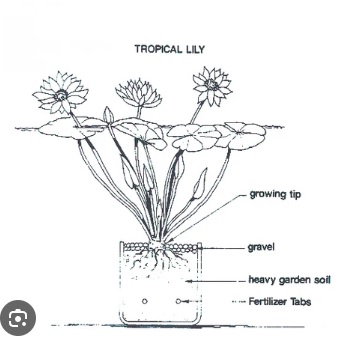Water Lilies
Hardy water lily
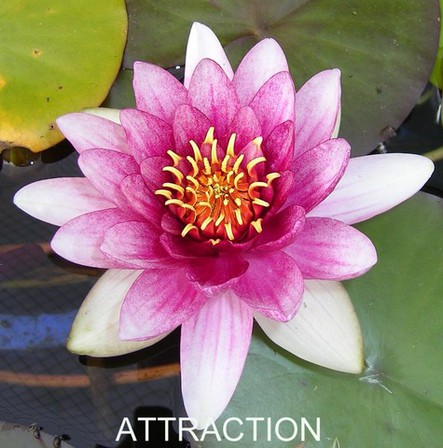
The Hardy water lily is a great easy care plant well suited to growing just about anywhere in New Zealand.
A good range of flower colours are available with the very popular pink, yellow, white and red colours are well catered for.
Dramatic dual colour options are also an option.
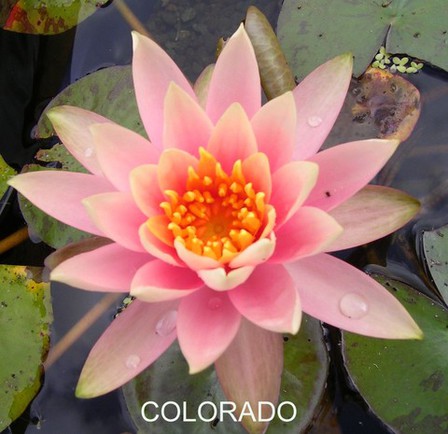
Hardy water lilies can start flowering as early as August, however late September/October is a more common time.
We work on Labour weekend when advising customers of flowering times.
Seasons of flowering are weather and variety dependant, we work on September to April.
Tip: Take into consideration the colour range to suit your pond situation. Darker colours of flowers and leaves don't seem to do so well in the hotter months, preferring early and late season growth. Like it to wearing a black t-shirt in the middle of summer, darker colours absorb the sunlight and are likely to overheat or cook.
A gallery of our water lilies is available here Gallery of Water lilies grown by Glenbogal Aquatic Limited (New Zealand)
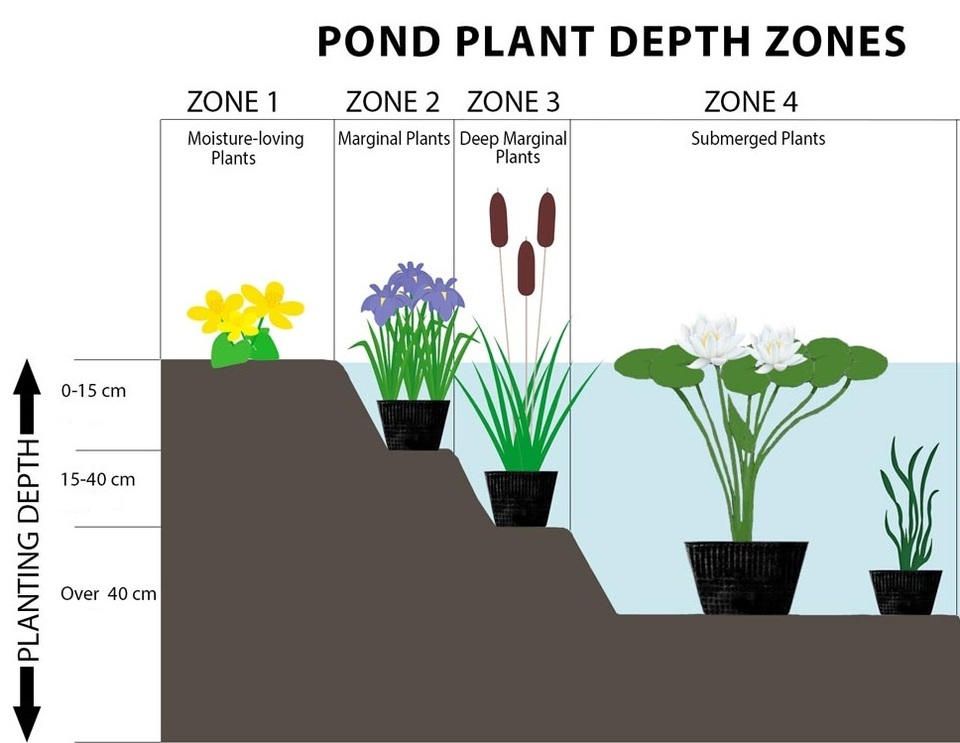
The ideal conditions vary slightly from plant to plant although most love as much sun as possible.
Depth can vary from 50mm (2 inches) from the top of the basket to 915mm (36 inches).
A good all round depth of about 300-400mm (12-16 inches) will accommodate most Submerged plants, including Hardy water lilies.
Hint: The deeper the water the colder the temperature due to the loss of light. Ledges on pool edges allow for movement of plants into deeper water once they have growth. You will find that if you place your Hardy water lilies in 900mm the growth will be alot slower to a plant grown in 400mm to 600mm of water.
As much as the plants are delicate to touch they are as their name implies "Hardy" great for harsher temperature locations. They will still go dormant in winter months.
If leaves or flowers are damaged they will produce new growth quickly if grown in good conditions and fertilised properly.
Propogation or re-potting
Some people swear by repotting their waterlilies every season to get the best out of the plant, this is not necessary unless your pond is too small to cope with a large growing waterlily.
The necessity of re-potting is to divide smaller "offshoot" plants for propogation or cut up the main rhizome to provide additional plants from one plant.
The main rhizome slowly dies off providing nutrients for the main crown and offshoots. Cutting back the rotting rhizome and excess roots can be done yearly, however repotting would be best every 2-3 years.
A basic photo outline of how to repot a Hardy is available on this website.
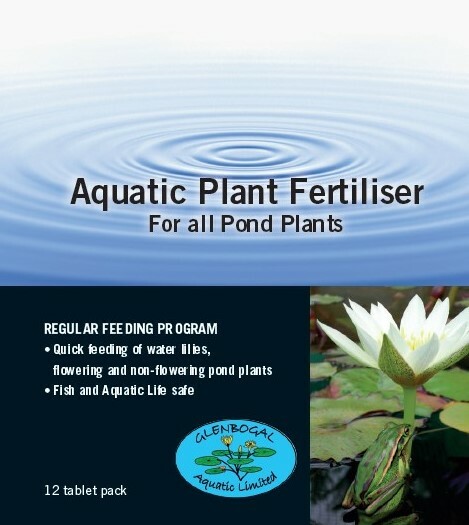
Aquatic Fertiliser Tablets & Pellets
Regular feeding with a seasonal or regular tablet provides your your water lily with all the nutrients they require for growth, lush leaves and flowering.
If your pond has a balance of available nutrient then use of fertilisers may not be required.
An excess of nutrient that is not being used by your Aquatic plants can cause growth of algae.
Like house plants, if your water lily leaves are yellowing and flowers are limited the likely-hood is a boost of nutrient is required by your water lily.
See Tablet Fertilisers for more information.
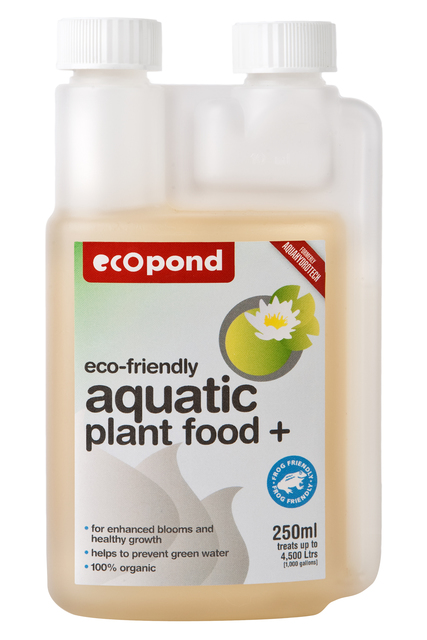
Liquid Aquatic Plant Food
As an alternative option to tablets or pellets, Ecopond has a liquid form of Aquatic plant food.
This product can be dosed directly into the pond on a regular weekly basis to keep the nutrient levels of the water balanced.
A algae control is also included to keep the outbreak of algae at bay.
See Ecopond products
on this site for more info.
Tropical Water Lily
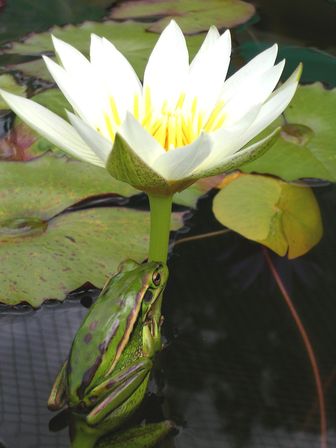
The tropical lily is a rather exotic addition to any pond with a tall proud flower that stands clear of the water surface.
The tropical flowers we have bloom in pink, white and yellow with the unique favourites, sky blue and purple.
They flower later in the season than the hardy variety, normally from around late November/early December. The flowers bloom longer into the autumn with plants still flowering in warmer areas till May.Hint:
A mix of the two types, Tropical and Hardy, is a great idea for a pond to extend the bloom time.
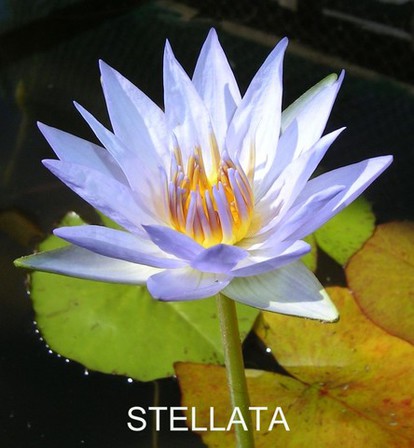
approximately two-thirds fill with Aquatic soil. Cover with soil and Aquatic stones. Place in a sunny position and once the roots are clear of the basket the plant can be moved into its preferred location.

Tropical lilies generally grow from a central crown in an upright position which makes planting very easy.
Tropical lilies can spread to1.5-2.0 metres(5-7 feet) when planted in shallow water with full sun.
Ideal depth is shallower than Hardy lilies around 30-40 cms(12-16 inches), this allows for much warmer water temperatures and faster growth.
The St Louis Gold is the smaller growing of the cultivars we grow with an average growth diametre of 1.0 - 1.2 metres. This is great for bowls and shallow ponds
Hint: The deeper the water the colder the temperature due to the loss of light. Ledges on pool edges allow for movement of plants into deeper water once they have growth. You will find that if you place your Hardy water lilies in 900mm the growth will be alot slower to a plant grown in 400mm to 600mm of water.
Tropical water lilies will still go dormant in winter months. Be prepared for your Tropical water lily to lose all leaves and revert back to the korm leaving a basket of aquatic soil.
Tropical lilies generally grow from a central crown in an upright position which makes planting very easy.
The tuber can be planted in the middle of a basket (as shown in our the diagram)
The tropical water lily grown new "pups" through the season from around the main central crown. These can be picked off at the end of the season and propogated into new plants.
Re-potting is suggested every 2 to 3 years due to the main korm becoming congested with new growth.
If your tuber has no leaf or root growth make sure the tuber is between 5 – 7cm below the soil surface then cover with Aquatic pebbles.
Dormant tubers and newly potted tropical lilies have a tendency to float if they are not anchored with roots. You can place a smooth stone over the tuber or roots to keep them in place.
A good balanced food is critical for these lilies as they grow extremely fast. As with the hardy lilies the Glenbogal Aquatic Fertiliser Pellets (seasonal) or Glenbogal Aquatic Fertilser Tablets (regular feeding) will provide the full balanced fertiliser requirements for tropical lilies.
Hint: Make sure the tablet or pellet is located away from the main plant growth area and covered with soil to limit any nutrient leeching.
See Tablet Fertilisers for more information.
